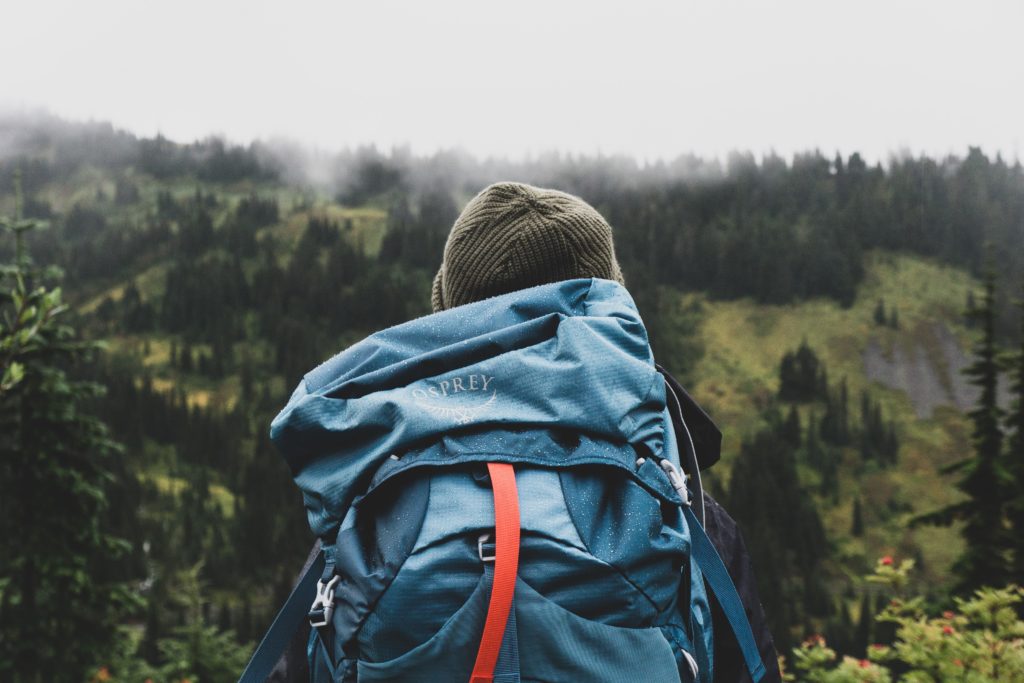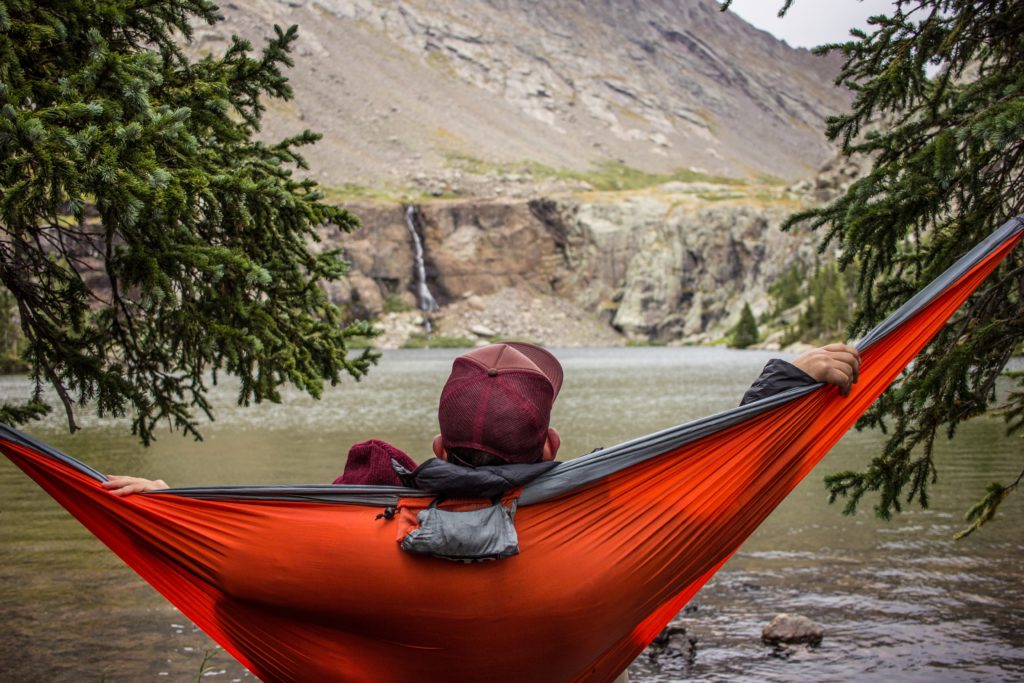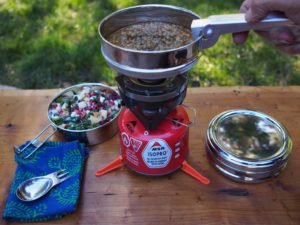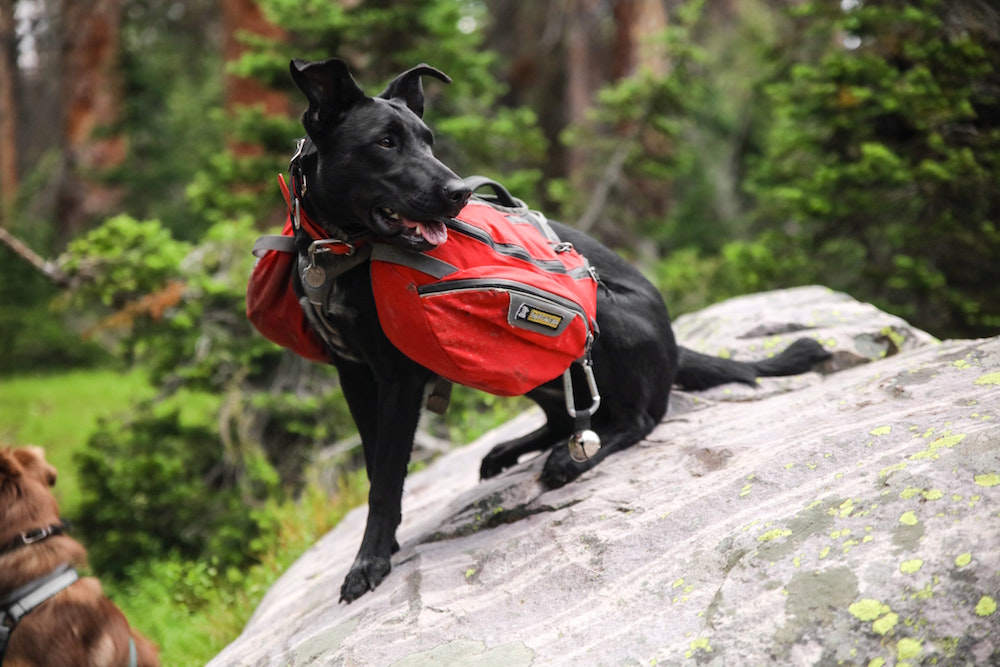
It’s no surprise that many vegans love the outdoors. For many, their love of the planet and all its living beings was their motivation for becoming vegan. One of the most intimate ways to experience the natural world is to simply pack your bags and head straight in. If you want to get a jumpstart on planning your post-COVID backpacking adventure, please feel free to use this as a resource. Without prior experience, this can be a confusing endeavor. Have no fear after a little self-education, and nudges in the right direction this process will be a breeze. You may have even found yourself a newfound passion!
Where Do I Start?
Start with the basics. The most important thing is to figure out where you’re going, how long you’re going for, and if you plan to go with or without other people or animals. Look into common local backpacking trails by word of mouth, or through the internet. Always tell a friend where you intended to travel and when they can expect to hear from you.
Almost all National Forests allow for free camping unless noted otherwise. Typically in a National Forest, you’ll want to pitch a tent a fair distance away from the trail or road preferably 100–200 feet. ON the other hand, National Parks typically have designated campsites. National Parks may require you to purchase a permit beforehand, so make sure to prepare accordingly. Public lands managed by the Bureau of Land Management are also acceptable places to pitch a tent. Each state has its own regulations for camping on Public Lands regarding duration and regulations.
Wilderness areas you will most likely not be able to camp at would include wildlife refuges and private land. Always take the time to understand how the land you will backpacking on is managed. This will save you heartache down the road if you find yourself having to turn around because you failed to bring money for a permit. Or your favorite hiking trail doesn’t allow for overnight stays.
Another thing to be aware of while picking your location is knowing whether or not dogs are allowed on the trails you intend to hike. Furthermore, if you do have a furry friend you’ll want to make sure they are up to date on their vaccinations. Lastly it is important to look into whether or not you will need a permit for a fire, or if fires are allowed where you intend to stay.
What do I Bring?
There are many different philosophies as to what one should bring on a backpacking trip. I say it all absolutely depends on your comfortability level with the outdoors, your budget, and the environment you plan to camp in.
If you live in the rainy PNW (Pacific Northwest) your hiking gear will look completely different from ones you’ll need in sunny Southern California or winter in Colorado. This is why it’s important to do specific research into the gear you’ll need. It all depends on what kind of backpacking you intend to pursue. The basics however are typically the same.

Sleeping
You’ll most likely want a sleeping bag. Compared to down sleeping bags, synthetics bags (which are also vegan-friendly) are heavier; however, if they get wet they still insulate, unlike down.
There are many ways to sleep in the outdoors. Most people opt for a tent, there are those that simply use a tarp, a hammock, a bivy, or nothing at all. It all depends on the weather conditions and your comfortability with sleeping outside. If you do choose not to use a tent, and you are using a tarp or a hammock in the summer, I still always advise using a mosquito net to keep the bugs off your face.
Cooking
A stove or no stove? Stoves can offer some comfort in the way of having warm meals. If that is not important to you, and you are keen to be as lightweight as possible you may choose not to bring a stove. Alternatively, there are folks who cook their food solely by the campfire. This may not be an option for many folks who live in wilderness areas with an increased risk of wildfires (always heed the no fire warnings, if any) or places where dry wood is hard to come by. There are many options for lightweight stoves, the heaviest aspect of stoves is typically the fuel.
Clothing, Toiletries
Again this is very dependent on the weather at the time you plan to take your trip. I find that no matter when or where you plan on taking your trip, it’s important to always have a few basics. A waterproof or windproof outer shell, a warm jacket or puffy, a shirt you intend to hike in, a base layer shirt for warmth and to sleep in, a base layer bottom, pants or shorts, and two pairs of underwear and socks. With the outdoors, follow the general rule that cotton is rotten, and try to use synthetic materials, especially if the weather looks unpredictable.

The right kind of hiking shoes is like picking your soulmate. Many thru-hikers choose to hike in trail runners as they are lightweight and breathable (they dry quickly). The old saying goes every pound on your feet is equal to five pounds on your back. When I thru-hiked the 400-mile Condor Trail I wore the Salomon Speedcross 4 and have never looked back to bulky hiking boots since. If you’re worried about your ankles, or if you feel more secure in bigger boots by all means find a shoe that makes walking long miles enjoyable for you.
With toiletries always bring toilet paper! Remember to poop far away from water sources and the trail and to bury your poop at least six inches deep. No one wants to see brown smeared toilet paper littering the trails. Bring essentials like a toothbrush and toothpaste, sunscreen, and biodegradable soap. Other than that it’s your personal preference whether you really need to bring other toiletries such as deodorant, lotion, and the like.
Emergency Essentials
Lastly and most importantly always always bring a first aid kit! You can buy a pre-organized first aid kit, or create your own. Take a look at these recommendations from REI.
If you plan to hike through bear country or are concerned for your general safety, I always recommend bringing bear spray. Look into how to properly use the bear spray before heading out the door.
If you plan on being in a highly remote location or are traveling alone, investing in a SPOT device may be a good idea. A SPOT device allows for folks to monitor your location through a GPS tracker, and you can send a distress signal alerting the local authorities that you are in danger. The device allows you to send SMS messages and depending on the model you can pre-download maps of the terrain beforehand.
What Do I Eat?

This may be an area where vegans can feel stressed. Many pre-made/dehydrated backpacking food often contains animal products. If you’re new to backpacking that may seem like the only thing that backpackers eat. This couldn’t be farther from the truth! If you love to cook this may even become a fun and exciting process for you.
Without a stove
While you first start off backpacking you may not have it in your budget to buy all the fancy gear right away. One of the first pieces of gear, you can get away with not having is a stove! This is very doable, especially on shorter trips.
Foods you can bring include:
- Nut Butter packets, you can smear this on dried fruit, into oatmeal, on a cracker, or simply eat as is.
- Dried Fruit and Nuts, a great source of healthy calories you can eat as a snack or sprinkle in your oatmeal
- Oatmeal, if you don’t have a stove, not to worry you can add water to your oats the night before, or eat the oatmeal right away mixed with water. No shame in your cold oats game.
- Cereal, believe it or not, you can still have cereal on the trail. Pre-pack your cereal into bags, and mix it in the morning with dehydrated coconut milk.
- Granola can be eaten as is, in your morning oats, or as a cereal itself
- Energy bars, my favorite is Larabars
- Tortillas, Pita bread, chips, and dehydrated hummus
- Squeezable pureed fruit
- No-bake energy balls
- Lastly any snacks you fancy that you feel are easily portable, and will keep well without a refrigerator. You can also bring a heavier meal for your first night since you know you will eat it soon and won’t need to worry about preservation. My favorite first-night meals are vegan tamales.

With a stove
With a stove, you definitely open up your cooking horizons. You can cook more complex meals that require boiling water. Such as instant coffee or tea! Don’t feel like all of your meals need to be freeze-dried or dehydrated, however, they do help with lessening your pack weight. Don’t feel pressured to spend the big bucks on these meal packs, you can dehydrate your food at home if you have an oven or dehydrator.
How to use an oven to dehydrate your food in an oven? There are many recipes online that can guide you with step by step instructions for dehydrating different meals at home. However, a simple rule is to set your oven to the lowest setting and to spread your food out evenly on a baking tray. Then pop it in the oven for about 6 to 8 hours. This works best with fruit but can be tweaked for other meals. You can even dehydrate hummus! I enjoy the recipes for homemade trail food found here. They have vegan recipes, dehydrating instructions, and details on how to prepare the meal on the trail.
No time for dehydrating, no problem. There are plenty of packable foods that can be made into backpacking meals.
Such as:
- Pasta
- Rice
- Ramen
- Miso soup
- I personally love the Indian food bran Tasty Bites, they come in vegan and vegetarian varieties
- Quinoa
- Couscous
- Lentils
- The list goes on! But these meals can all be tweaked and prepared in so many different yummy fashions!
What do I drink?
It is always important to bring water and a way to purify your water! There are so many ways to purify your water take a look at the list below! No matter where I go I always bring two 32 ounce water bottles.
- Pump filters, they tend to be a bit bulky but very durable
- Straw filters takes a bit longer to filter but are very lightweight
- UV filters are also a convenient lightweight option
- Gravity filter can be bulky but filters a lot of water
- Squeeze filters, lightweight and user-friendly (this is what I use)
- Bottle filter, where your water bottle filters the water for you
- Boiling takes the longest but is very effective
- Chemicals, such as iodine tablets very lightweight, interesting flavor
With this in mind feel free to zest up the flavor of your water! You can add in water flavor packets packed with electrolytes to keep you feeling fresh throughout your adventures.

That’s all for now folks! I hope this information helps you to get started on your next or first adventure into the wild.
Also by Elena: How I Thrive As A Foraging Vegan In Sitka, Alaska
Get more like this—Sign up for our daily inspirational newsletter for exclusive content!
__
Photo: Unsplash





